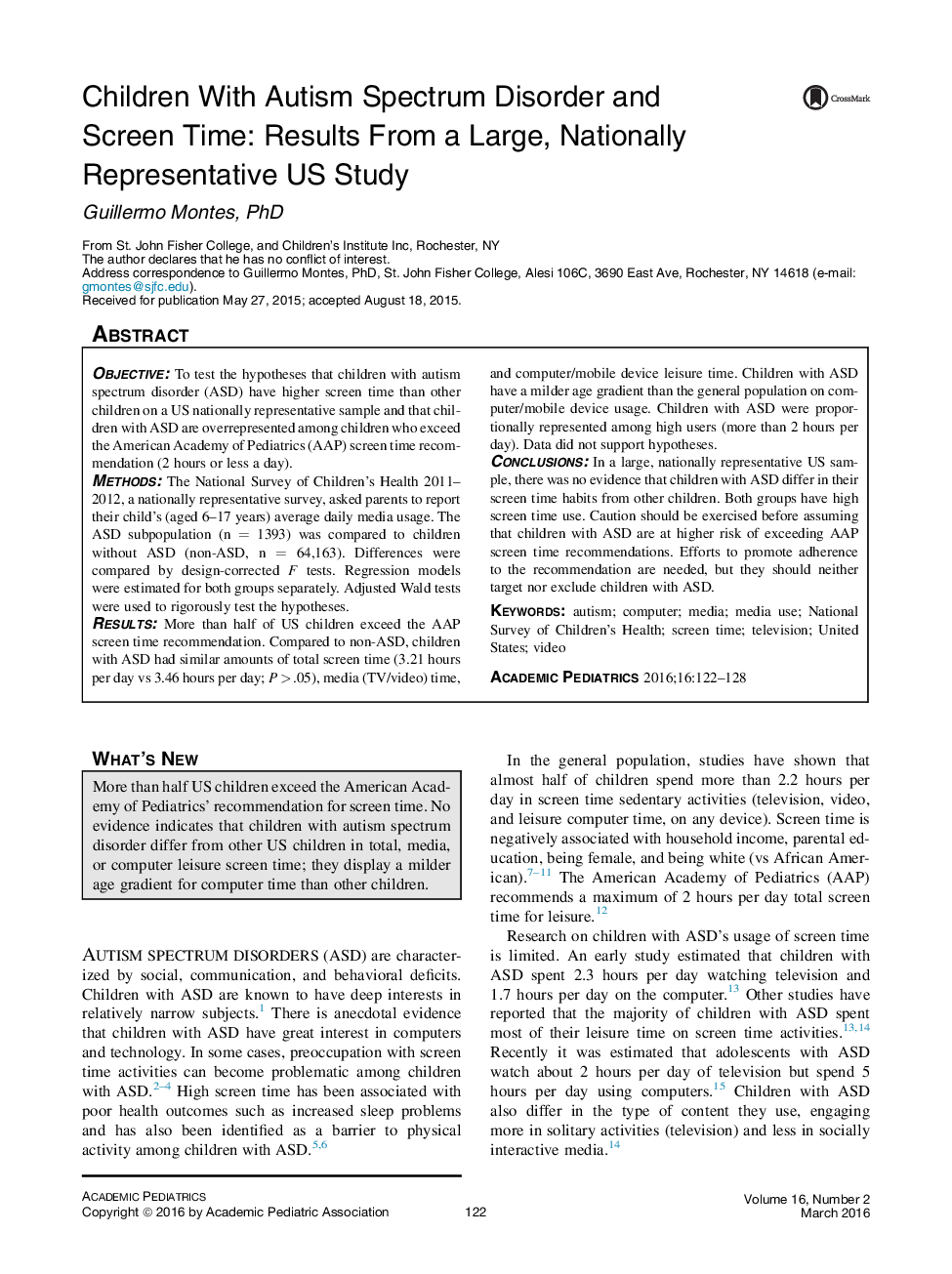| Article ID | Journal | Published Year | Pages | File Type |
|---|---|---|---|---|
| 4139133 | Academic Pediatrics | 2016 | 7 Pages |
ObjectiveTo test the hypotheses that children with autism spectrum disorder (ASD) have higher screen time than other children on a US nationally representative sample and that children with ASD are overrepresented among children who exceed the American Academy of Pediatrics (AAP) screen time recommendation (2 hours or less a day).MethodsThe National Survey of Children's Health 2011–2012, a nationally representative survey, asked parents to report their child's (aged 6–17 years) average daily media usage. The ASD subpopulation (n = 1393) was compared to children without ASD (non-ASD, n = 64,163). Differences were compared by design-corrected F tests. Regression models were estimated for both groups separately. Adjusted Wald tests were used to rigorously test the hypotheses.ResultsMore than half of US children exceed the AAP screen time recommendation. Compared to non-ASD, children with ASD had similar amounts of total screen time (3.21 hours per day vs 3.46 hours per day; P > .05), media (TV/video) time, and computer/mobile device leisure time. Children with ASD have a milder age gradient than the general population on computer/mobile device usage. Children with ASD were proportionally represented among high users (more than 2 hours per day). Data did not support hypotheses.ConclusionsIn a large, nationally representative US sample, there was no evidence that children with ASD differ in their screen time habits from other children. Both groups have high screen time use. Caution should be exercised before assuming that children with ASD are at higher risk of exceeding AAP screen time recommendations. Efforts to promote adherence to the recommendation are needed, but they should neither target nor exclude children with ASD.
